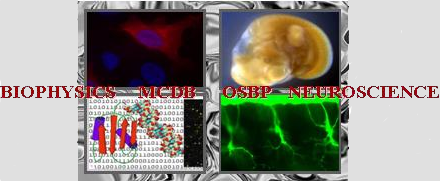Poster abstracts
Poster number 63 submitted by Midhun N. K. Anne
Delineating the Roles of Perturbed Neuronal Networks and Glial Cells in a Mouse Model of SCN8A Developmental and Epileptic Encephalopathy
Midhun Anne ( Molecular, Cellular, and Developmental Biology Graduate Program), Laura Kakuk-Atkins, Robert Ison, Griffin Obermiyer, Jason Kaplan, Jacy L. Wagnon (Department of Neuroscience)
Abstract:
Developmental and Epileptic Encephalopathies (DEEs) are characterized by treatment-resistant seizures and developmental delay resulting in motor impairment and intellectual disability. SCN8A DEE is caused by mutation of the SCN8A gene, which encodes the Nav1.6 voltage-gated sodium channel. Pathogenic variants of Nav1.6 cause seizures and motor impairment due to alterations in the biophysical properties of the mutant channels, which perturb neuronal function. Forebrain excitatory neurons are implicated in seizure pathology, but it is unknown how different neuronal networks contribute to the clinical phenotype, including motor impairment. We used transgenic mice to study the neuronal mechanisms contributing to patient phenotypes. We developed a new mouse model of SCN8A DEE with an inducible allele of the patient variant p.Thr767Ile (T767I). Global neuronal expression of T767I with Sox2-cre (Scn8a-T767I/+) resulted in early-onset seizures and premature lethality. Scn8a-T767I/+ mice also exhibited motor impairment, including righting delay, muscle weakness, and altered gait. Using Cre-driver mouse lines, we induced expression of Scn8a-T767I/+ in distinct neuronal networks to study the contribution of these networks to seizure and motor impairment. We found that forebrain excitatory neurons drove seizure generation, motor neurons contributed to righting delay, cerebellar Purkinje neurons contributed to gait disturbance and parvalbumin interneurons caused both seizures and gait disturbance. We also assayed gene expression of major glial cell markers to determine the extent to which non-neuronal mechanisms may be perturbed in SCN8A DEE. We identified dysregulation in microglial and oligodendroglial marker genes, suggesting glial homeostasis is disrupted in SCN8A DEE. Our current studies will help us delineate the role of major neuronal networks and glial cells to provide a more complete understanding of the mechanisms underlying seizures and motor impairment in SCN8A DEE.
References:
1. Specchio N, Curatolo P. Developmental and epileptic encephalopathies: what we do and do not know. Brain. 2021 Feb 12;144(1):32-43. doi: 10.1093/brain/awaa371. PMID: 33279965.
2. Veeramah KR, O'Brien JE, Meisler MH, et al. De novo pathogenic SCN8A mutation identified by whole-genome sequencing of a family quartet affected by infantile epileptic encephalopathy and SUDEP. Am J Hum Genet. 2012;90(3):502-510. doi:10.1016/j.ajhg.2012.01.006
3. Estacion M, O'Brien JE, Conravey A, et al. A novel de novo mutation of SCN8A (Nav1.6) with enhanced channel activation in a child with epileptic encephalopathy. Neurobiol Dis. 2014;69:117-123. doi:10.1016/j.nbd.2014.05.017
Keywords: SCN8A, Motor impairment, Developmental and epileptic encephalopathy
